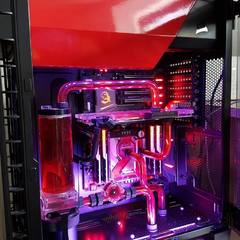Nvidia Disables GPU PhysX when Second non-Nvidia GPU is Installed
-
Topics
-
ALiAli123 ·
Posted in Power Supplies0 -
0
-
VixAAT ·
Posted in Programs, Apps and Websites0 -
0
-
AlfaProto ·
Posted in Troubleshooting1 -
0
-
busby_bee_boy ·
Posted in New Builds and Planning0 -
1
-
Edward78 ·
Posted in Linux, macOS and Everything Not-Windows1 -
4
-

















Create an account or sign in to comment
You need to be a member in order to leave a comment
Create an account
Sign up for a new account in our community. It's easy!
Register a new accountSign in
Already have an account? Sign in here.
Sign In Now